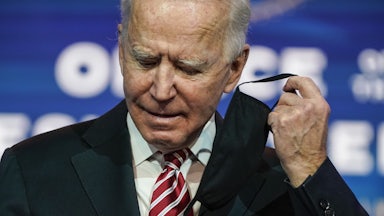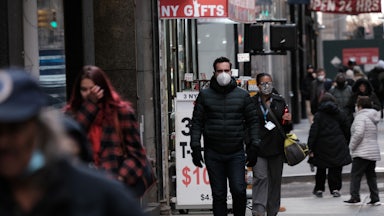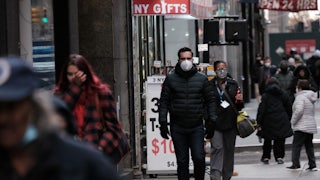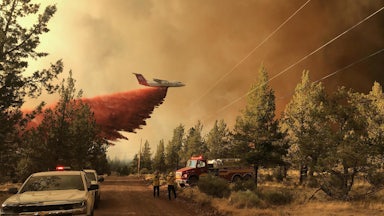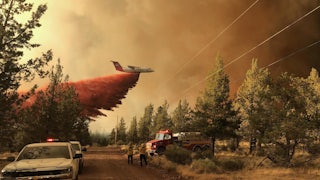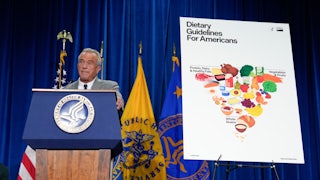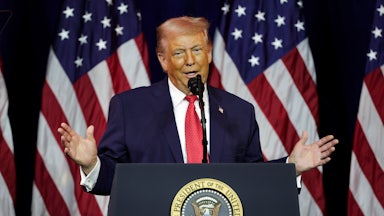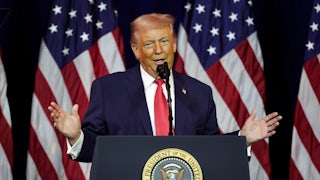In March 2020, The New York Times published a photo essay titled “The Great Empty.” It was an unsettling testimony of public landscapes leached of humanity: Times Square lit up for no one, decluttered highways in Colombia, a commuterless Munich subway, an empty Beijing diner.
In 2022, the photos are almost a comfort, proof in hand that SARS-CoV-2 was once capable of cowing our species into eerie stillness. Today, the external world has returned to sickening motion even as it’s hit by the largest wave in cases yet. Meanwhile, many of us are succumbing to an equally unnerving plague of mass apathy. The Great Empty has become an internal vacancy.
Where we used to flinch, we now shrug. In this new era, we are not only tired of endless suffering; we are fatigued by our own fatigue. We are deadened to death itself.
“I lost count of how many times I heard my colleagues say the words ‘I don’t want to do this anymore,’” a critical care nurse wrote in Scientific American this month. A friend of mine admitted over the phone that she’s starting to abandon efforts to persuade her dad, an anti-vaxxer with kidney disease, to protect himself. “My Covid cup is full,” she told me somberly. As Theo McKenna, a 31-year-old bartender and actor in New York City who’s boosted and masks up, told Vox late last year: “There is a part of me that’s like, ‘I don’t care! I don’t care at all!’”
It’s often a discomforting inertia, says Mary Alvord, a psychologist in Maryland who specializes in resilience. “There’s a desire for homeostasis,” she says, and yet guilt and shame greet you once you reach it. Apathy toward a global pandemic is, after all, a privilege.
I count myself as an uncomfortable participant in this widespread moral and emotional flatlining. Two years into Covid-19, my soul seems to be slowly taking itself offline. I avoid once-horrifying, now-stupefying pandemic statistics that inform me that the rolling average for daily cases has more than tripled last winter’s then-record-breaking rate and that 13,000 people in the United States died of Covid-19 last week alone (9/11’s death toll, four times over). When it comes to contemplating another wave of unending testing lines, circling ambulances, people choking on their own lungs in lonesome deathbeds, mobile morgues, and disenfranchised grief, I either can’t any longer or won’t anymore. An editor asks me to write a story (this one) about the public’s abandonment of our ground-down health care system in its darkest hour, and I resist.
When I bring this all up with my therapist, she tells me I am not her only patient struggling with pandemic apathy. Right now, she says, it seems to be especially afflicting those who, until recently, had considered themselves highly engaged, cooperating as much as possible with public health guidelines to protect society’s most vulnerable and enact their core values of justice and compassion. In our apathy, we finally yield to a dread that all our careful compliance has been in vain, given omicron’s brutal strain on the health care system. “We’re always looking to make sense out of something we can’t make sense of,” she advises. “Dissociation is a survival mode.”
As the pandemic’s horrors evolve yet again, apathy offers a blunt, last-ditch psychological defense. It numbs our remaining senses. It steels our growing weaknesses. It acknowledges the intolerability of reality by ignoring it altogether.
“It’s a natural defense mechanism that the human psyche has,” says Massimo Pigliucci, a philosophy professor at City College of New York. “The human mind just gives up, just says, ‘I’m done.’” We can see this play out across history: In times of war, plague, exile, and other atrocities, humanity occasionally loses interest in its own integrity and survival. “This is not a new phenomenon,” Pigliucci says.
But precedence doesn’t make it any less unsettling today, or in the past. “We are now confronted with a depreciation,” said novelist Henry James in 1915 during World War I, “with a loss of expression through increase of limpness, that may well make us wonder what ghosts will be left to walk.”
For the Stoics—adherents of an ancient Greek philosophy forged amid political revolts, violent wars, and one of antiquity’s most crushing plagues—apathy, in fact, was aspirational.
Stoics were concerned with what they called the passions, an unhealthy and overwhelming set of emotions that include fear, anger, hatred, and grief. Therapeia, the philosophical therapy of emotions, aimed for apatheia, an extirpation of and emancipation from those passions.
This apatheia is no simple emotionlessness. It is an epic struggle to reason through life’s greatest burdens. “It is easier to banish dangerous passions than to rule them,” the Roman Stoic philosopher Seneca wrote in 45 A.D. “It is easier not to admit them than to keep them in order when admitted.”
In the many centuries since stoicism first flourished, apathy as we understand it today—as a disillusionment or retreat—reappears as a natural feature of mass suffering.
A plague, observed the playwright Antonin Artaud in 1933, is “a social disaster so far-reaching, an organic disorder so mysterious” that it “impels the soul to its utmost” and leads to an “asphyxiating inertia.” Histories and medical treatises of pandemics, he notes, “seem to have paid much less attention to morbid symptoms than to the demoralizing and prodigious effect produced on the victims’ minds.”
Likewise, apathy rears its head during and after prolonged periods of violence. In his 1866 collection of poems about the American Civil War, Herman Melville included one called “Apathy and Enthusiasm.” “Through the horror of the calm / The paralysis of arm / In the anguish of the heart,” Melville wrote. “In the stoniness that waits / The finality of doom.”
A little over a century later, Susan Sontag, while meditating on the social impact of twentieth- and twenty-first-century war photography in Regarding the Pain of Others, suggested that the constant capture and wide dissemination of violent imagery had not moved society to outrage. Instead, it habituated the public to horror and desensitized it to atrocity. “Shock can become familiar. Shock can wear off,” wrote Sontag. “Even if it doesn’t, one can not look.” In fact, the longer we’re exposed to inhumanity, she argued, the more of our own we stand to lose. “Compassion is an unstable emotion. It needs to be translated into action, or it withers.”
In the pot-banging and health-care-hero-saluting early days of the pandemic, many appeared to have overflowing reserves of compassion. By 2021, it was running dry. “When the pandemic broke, I thought it was a crisis that would be palpable because it was present. The dead would be known and seen. The mourning would be shared,” wrote Mary Dudziak, a historian of war at Emory University, last summer. “I expected that proximate Covid-19 deaths would motivate Americans to take action to save lives. I was wrong about all of this, of course.” Now evidence of collapse—an ever-rising toll of avoidable deaths, a medical system pushed past its brink, supply chain breakdowns, and shortages of every kind of essential worker—further deplete any remaining dregs of hope and willpower.
This modern mass apathy is a far cry from the Stoics’ aspirational apatheia. “The states described as apathy, moral or emotional anesthesia, are full of feelings,” Sontag wrote, “the feelings are rage and frustration.”
For those who care about Covid-19 (and have so much, for so long) caring itself has become agony. In its stead, apathy—as both a psychological symptom and response—offers only flimsy relief while posing a profound existential threat. What reveals more about a person’s inner constitution: 22 months of sustained compassion or giving up in month 23? What does it mean to reach for an escape hatch when so many—the elderly, the immunocompromised, people with disabilities, and the most essential and underpaid of workers, to name a few—don’t have the luxury of checking out of the pandemic?
After surviving Nazi concentration camps and witnessing grotesque acts of inhumanity and violence, psychiatrist and psychotherapist Victor Frankel developed logotherapy, a philosophical approach aimed at finding meaning through suffering.
“Illness is the great confessional,” Virginia Woolf wrote in 1926. But what, exactly, does our mass pandemic apathy, in all its contradictions, confess to? Here, I will defy my own dread to offer a most generous and optimistic interpretation: Having reached the edge of our limits, we can better appreciate the deep needs they delineate. When we steel our emotions, we reveal a desire for vulnerability. When we disavow our notions of how things should be, we turn our focus on what remains squarely within our individual control. And when we turn away and inward, we unveil not an inherent callousness but a desperate hunger for communal mourning and healing.
“Many people think that grief is privatizing, that it returns us to a solitary situation,” philosopher Judith Butler wrote in 2008. The opposite is true, Butler goes on. “Let’s face it. We’re undone by each other. And if we’re not, we’re missing something.” Mass apathy, for all its lonely nothingness, may not be an absence, after all—but rather evidence of our overwhelming need to connect, and then to heal.

